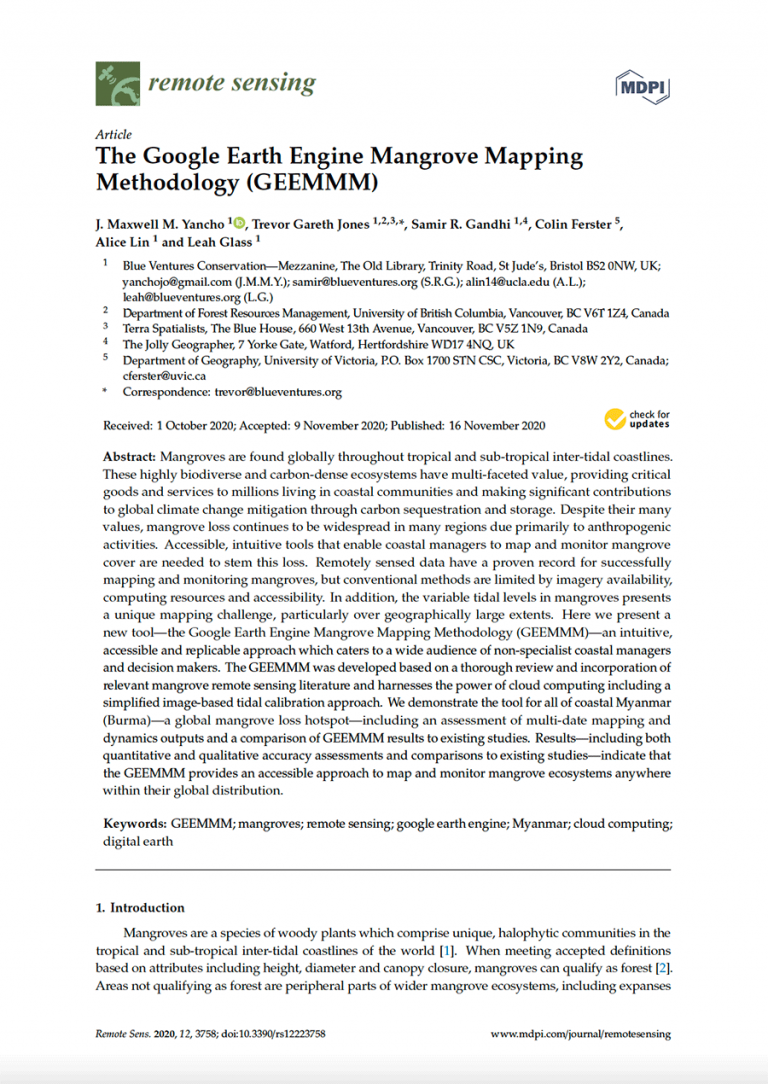Abstract
Mangroves are found globally throughout tropical and sub-tropical inter-tidal coastlines. These highly biodiverse and carbon-dense ecosystems have multi-faceted value, providing critical goods and services to millions living in coastal communities and making significant contributions to global climate change mitigation through carbon sequestration and storage. Despite their many values, mangrove loss continues to be widespread in many regions due primarily to anthropogenic activities. Accessible, intuitive tools that enable coastal managers to map and monitor mangrove cover are needed to stem this loss. Remotely sensed data have a proven record for successfully mapping and monitoring mangroves, but conventional methods are limited by imagery availability, computing resources and accessibility. In addition, the variable tidal levels in mangroves presents a unique mapping challenge, particularly over geographically large extents. Here we present a new tool—the Google Earth Engine Mangrove Mapping Methodology (GEM)—an intuitive, accessible and replicable approach which caters to a wide audience of non-specialist coastal managers and decision makers. The GEM was developed based on a thorough review and incorporation of relevant mangrove remote sensing literature and harnesses the power of cloud computing including a simplified image-based tidal calibration approach. We demonstrate the tool for all of coastal Myanmar (Burma)—a global mangrove loss hotspot—including an assessment of multi-date mapping and dynamics outputs and a comparison of GEM results to existing studies. Results—including both quantitative and qualitative accuracy assessments and comparisons to existing studies—indicate that the GEM provides an accessible approach to map and monitor mangrove ecosystems anywhere within their global distribution.

















